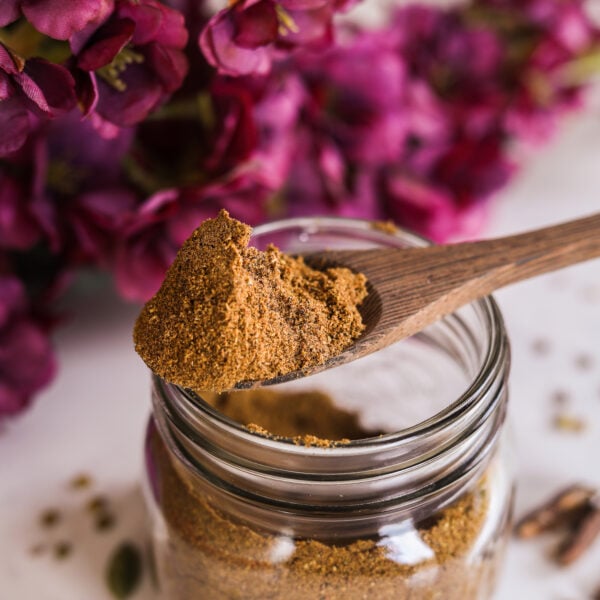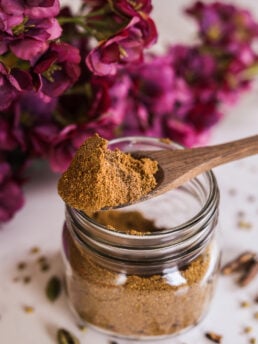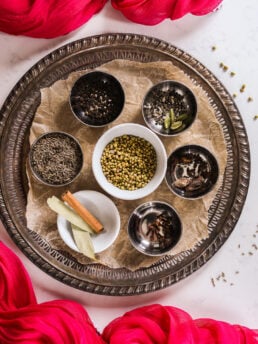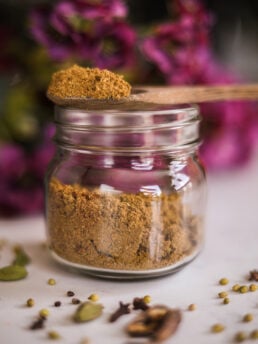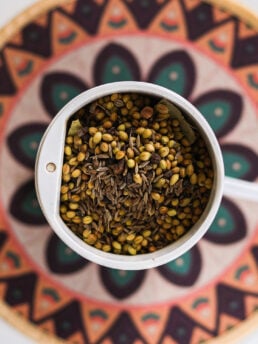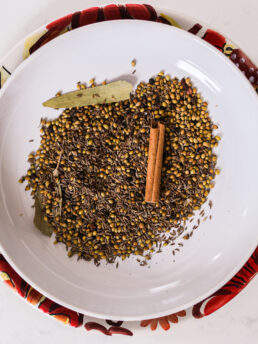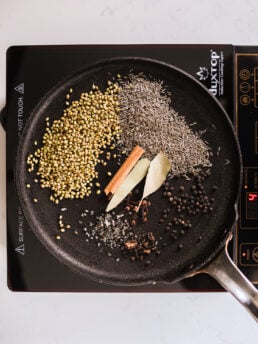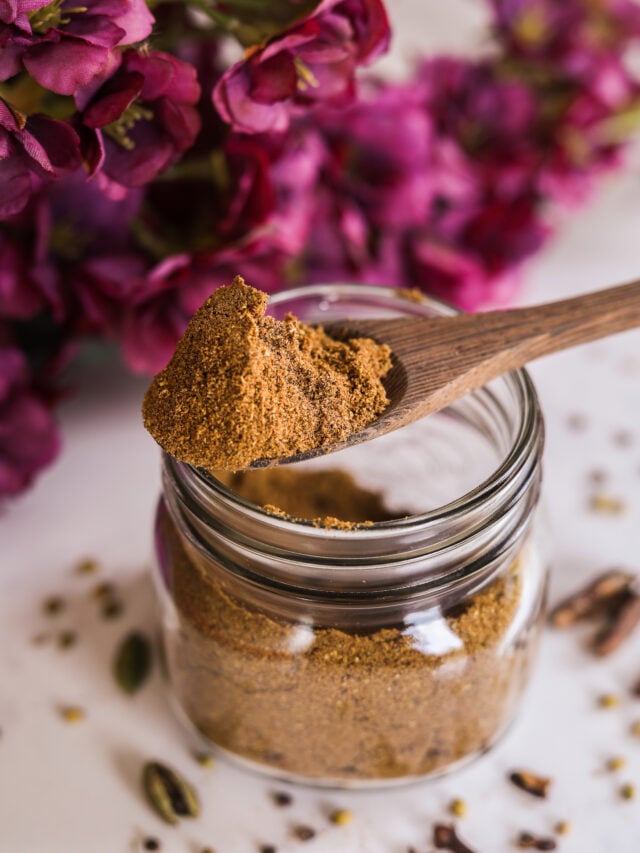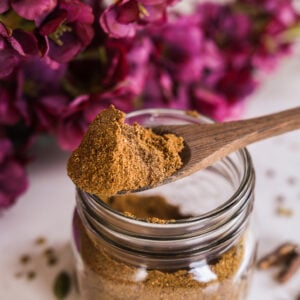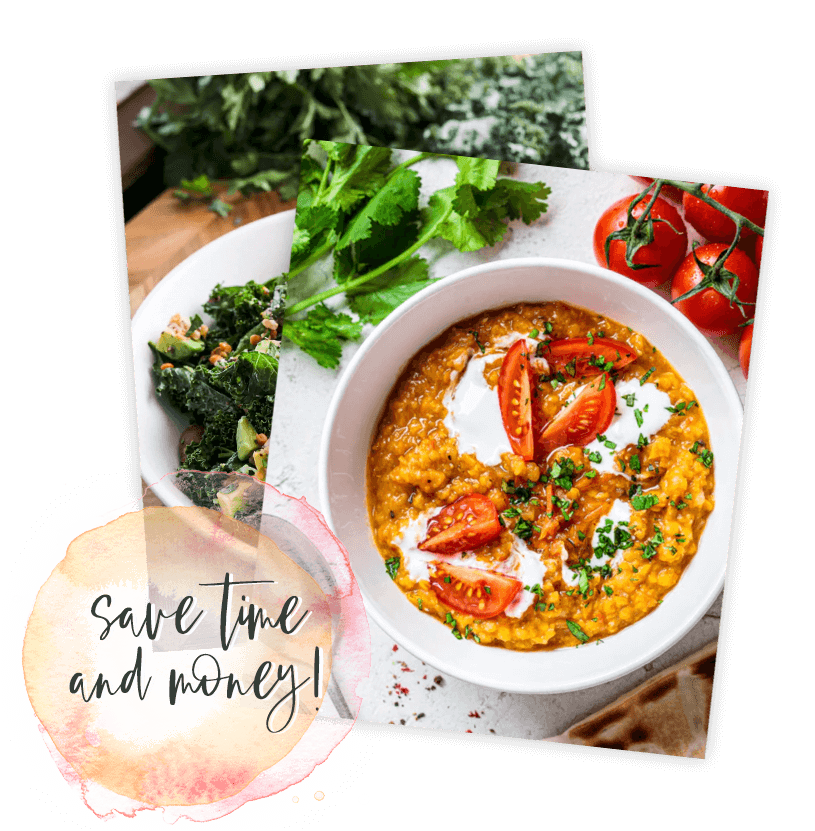Making your own garam masala powder at home is a simple and delicious way to add an authentic flavour to your favourite Pakistani and Indian recipes. It’s quick (10 minutes!), easy, and you’ll never go back to store-bought once you’ve tasted the homemade version!
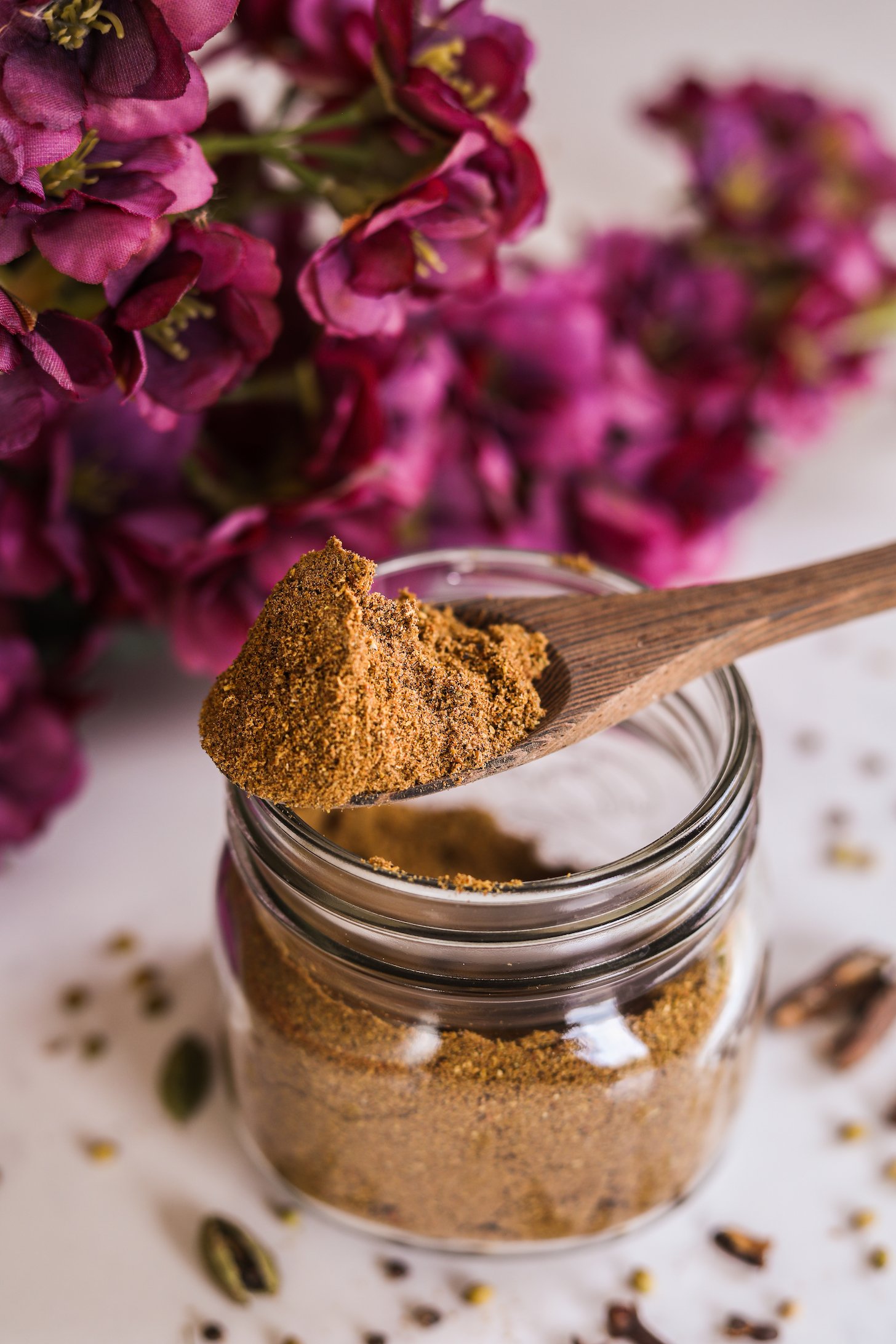
I’ve been creating my own garam masala recipe for a long time, even before I became a dietitian. And every time I make it, the experience transports me back to my home in Pakistan with my beloved granny. Her mastery in blending spices is an important part of my most cherished cooking experiences. Nowadays, I endeavour to replicate her masterful techniques to create special flavours in my dishes and share them with you.
Garam masala uses
There are many uses for this unique spice blend.
It can be sprinkled on everything from salads and eggs, fish to rice dishes, like this mouthwatering haddock fish biryani or our family’s favourite brinjal curry. Surprisingly, it can even be stirred into tea. Other ways you can enjoy it are:
- Marinating chicken, seafood and vegetables
- Incorporating it into yogurt-based dip recipes such as raita and chutney
- Experimenting with it in baking recipes such as cakes and bread to add a rare yet delightful twist.
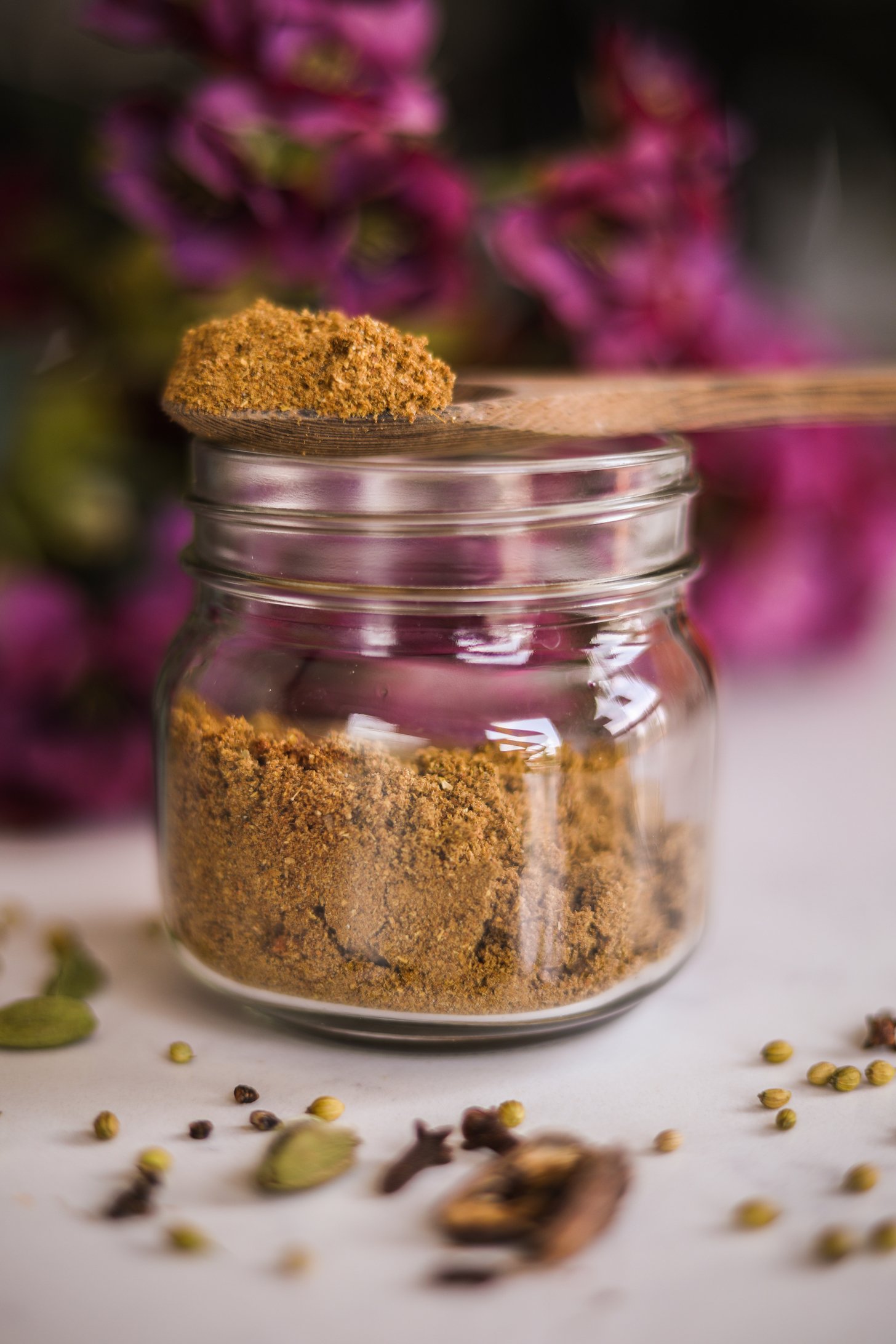
What is garam masala made of?
A favourite Indian spice blend that has become popular around the world, garam masala is a blend of spices, including cardamom, black pepper, cloves, cinnamon, cumin and coriander seeds. However, the recipe differs from region to region, but typically these spices are dry-roasted in a pan or tava – before being ground together into an aromatic powder.
Garam masala powder adds an authentic depth of flavour to curries, vegetables and rice dishes. In my opinion, the unique combination of spices makes garam masala a distinctive ingredient. Its aroma and taste exude warmth, richness and a subtle hint of sweetness.
Nutrition highlights
When you craft your own garam masala, you can be sure that it is free from preservatives and other additives. It also has a great source of vitamins, minerals, fibre and antioxidants.
- Cumin seeds in the mix are rich in iron, which helps in the production of red blood cells and therefore helps you to stay energized.
- Cardamom seeds in the mix are a source of magnesium which helps to keep muscles and nerves functioning properly.
- Cloves are rich in antioxidants, touted for their anti-inflammatory properties – to help combat certain diseases.
- Coriander seeds are a good source of dietary fibre and vitamin A, essential for healthy eyesight.
- Bay leaves contain vitamins A and C, which are both essential for healthy immunity.
Ingredients
A garam masala spice blend is made up of a combination of whole spices that are dry-roasted, before being ground into a fine powder. The precise recipe varies from region to region and even family to family. Some people like to include other spices such as nutmeg, star anise or mace too – all of which add an extra layer of complexity to your dishes.
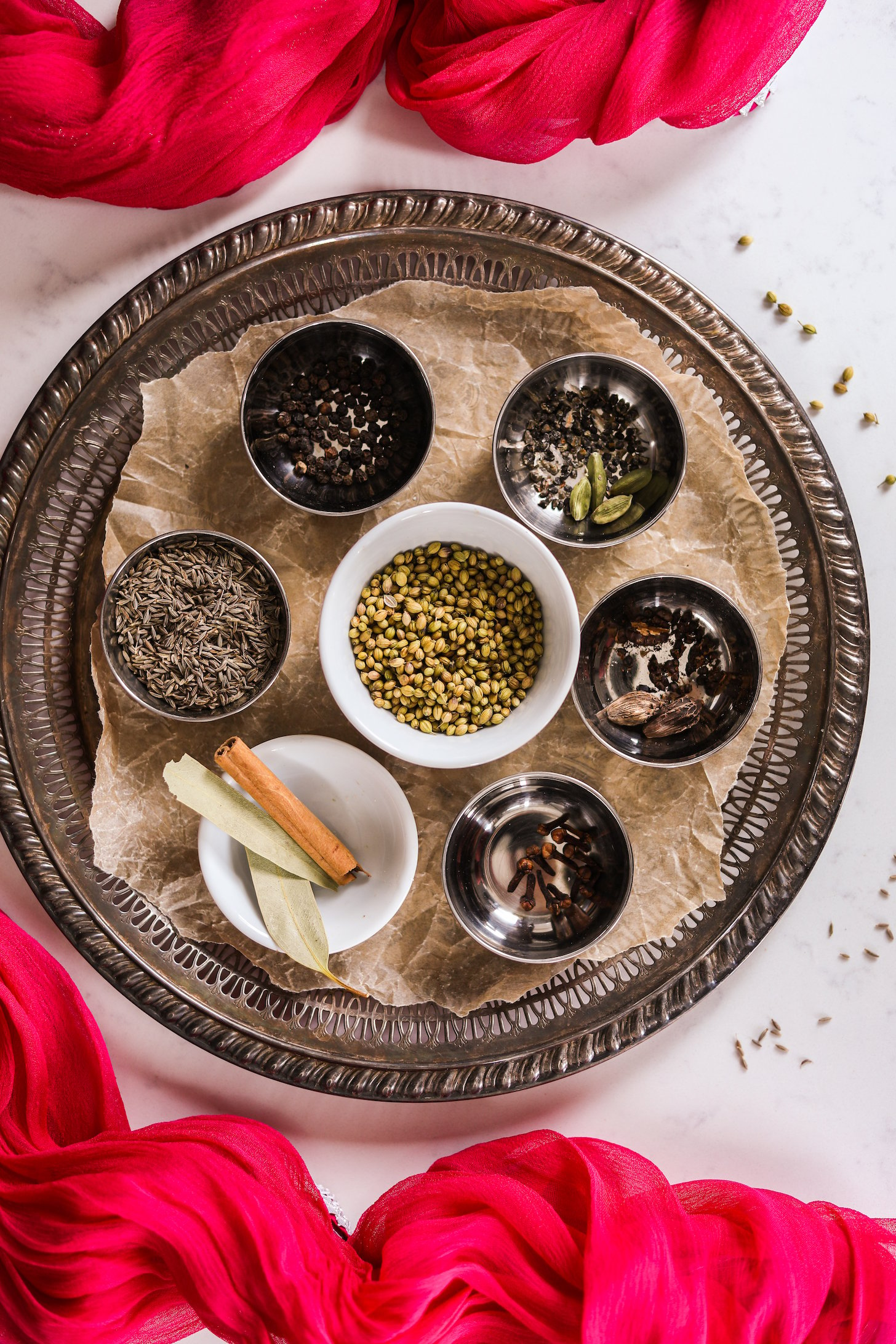
I typically stick to a basic garam masala mix, which includes the following spices:
- coriander seeds
- cumin seeds
- cardamom pods
- black peppercorns
- cloves
- black cardamoms
- cinnamon stick
- bay leaves
How to make it in 10 minutes
In two simple steps, you will have your own garam masala powder!
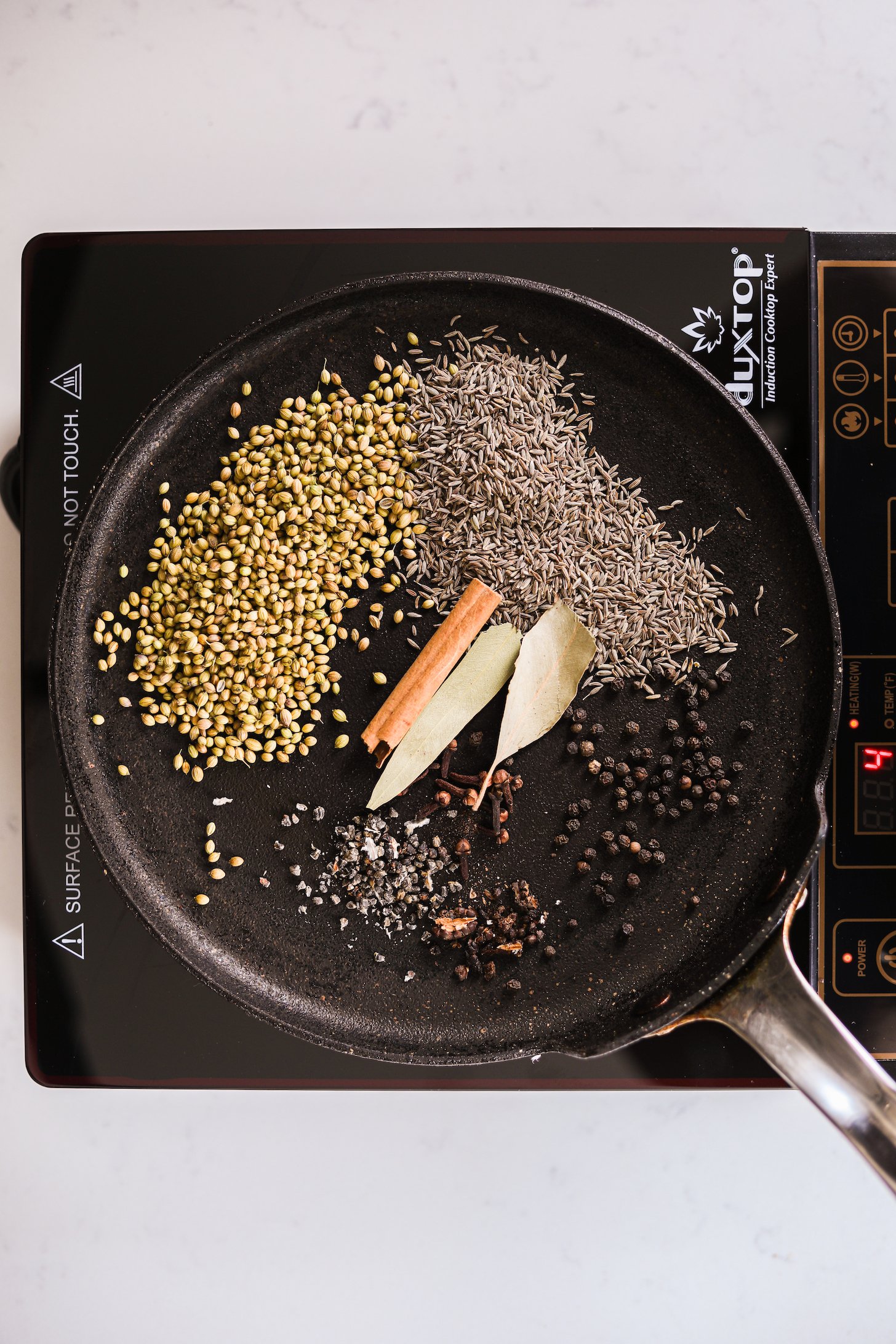
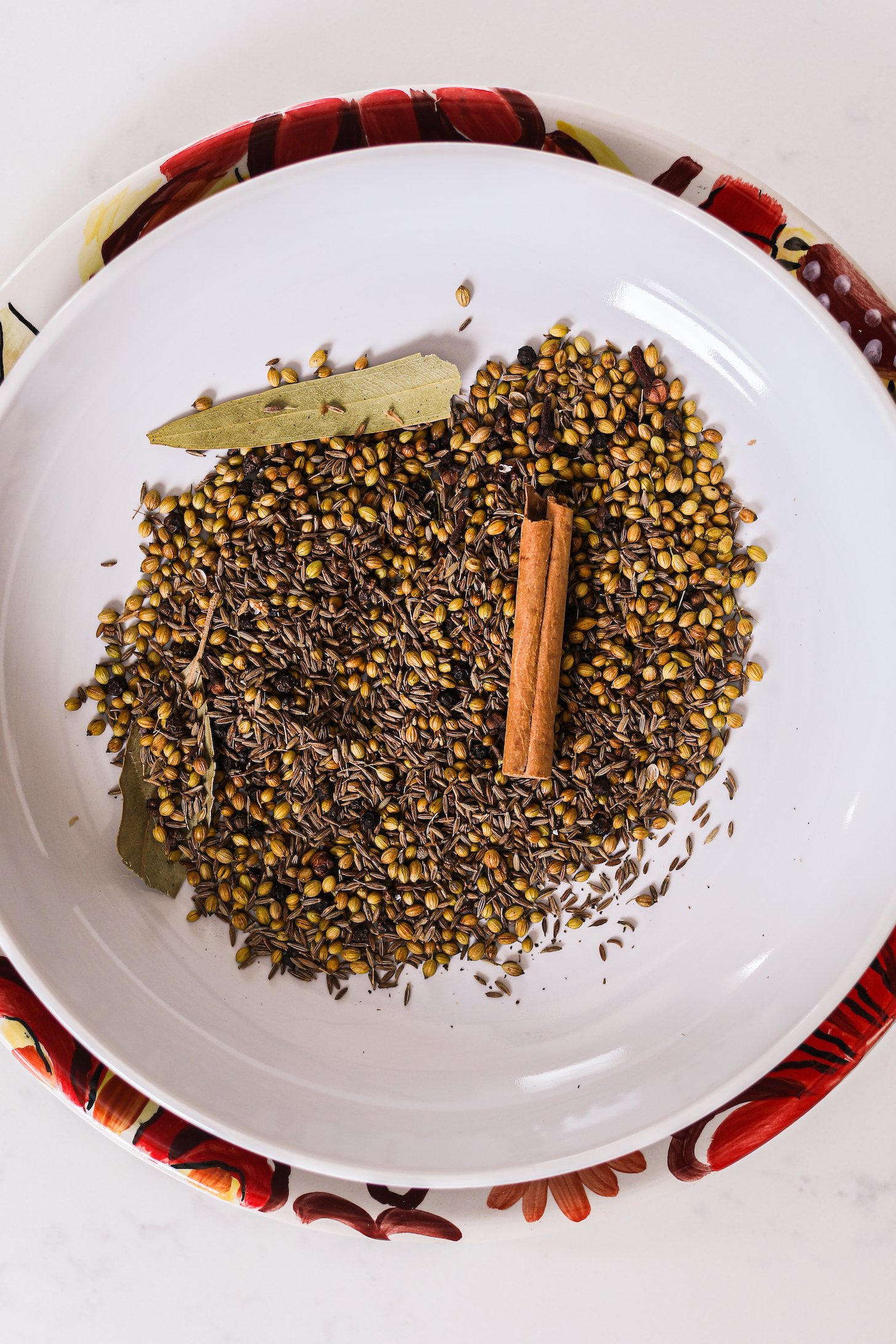
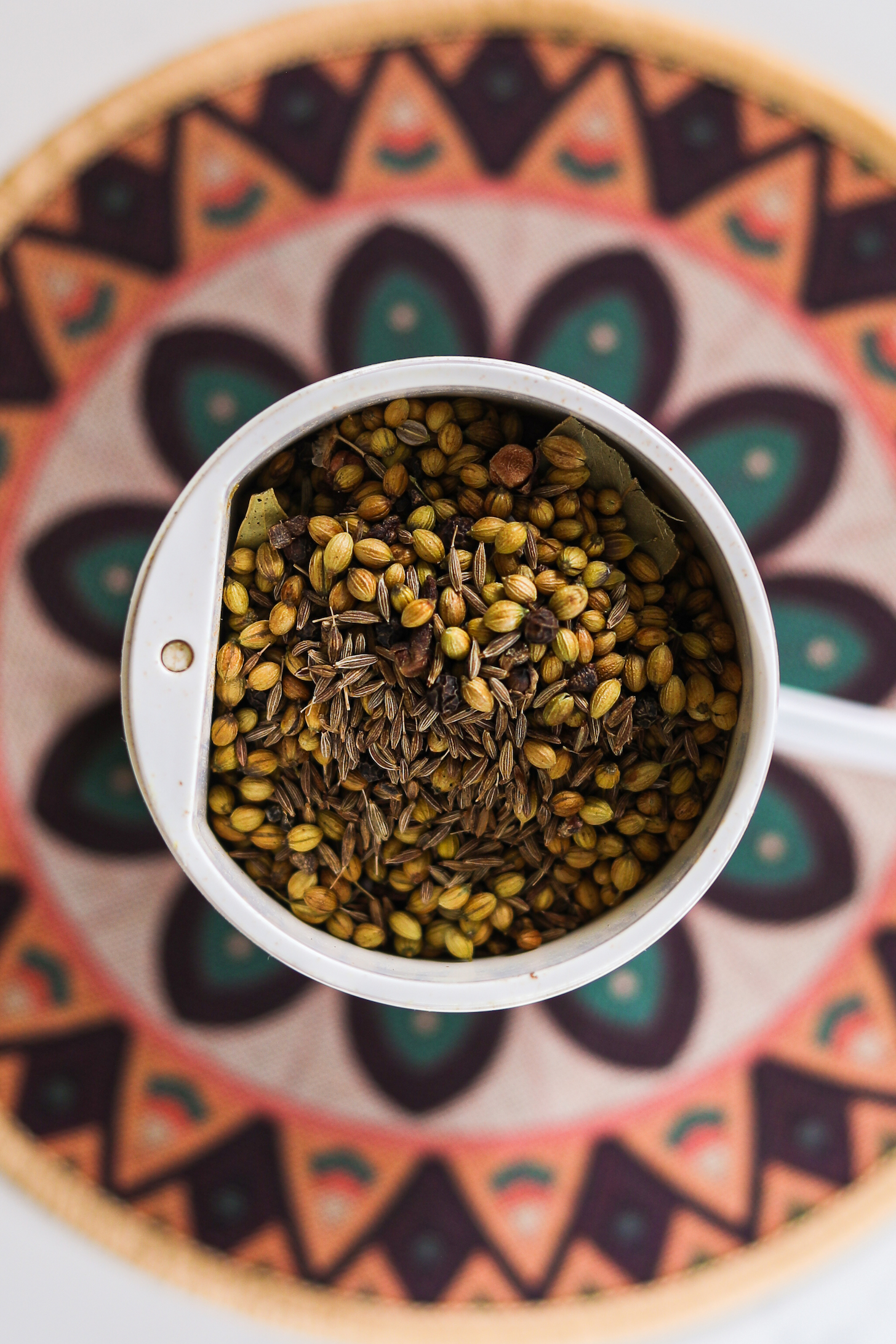
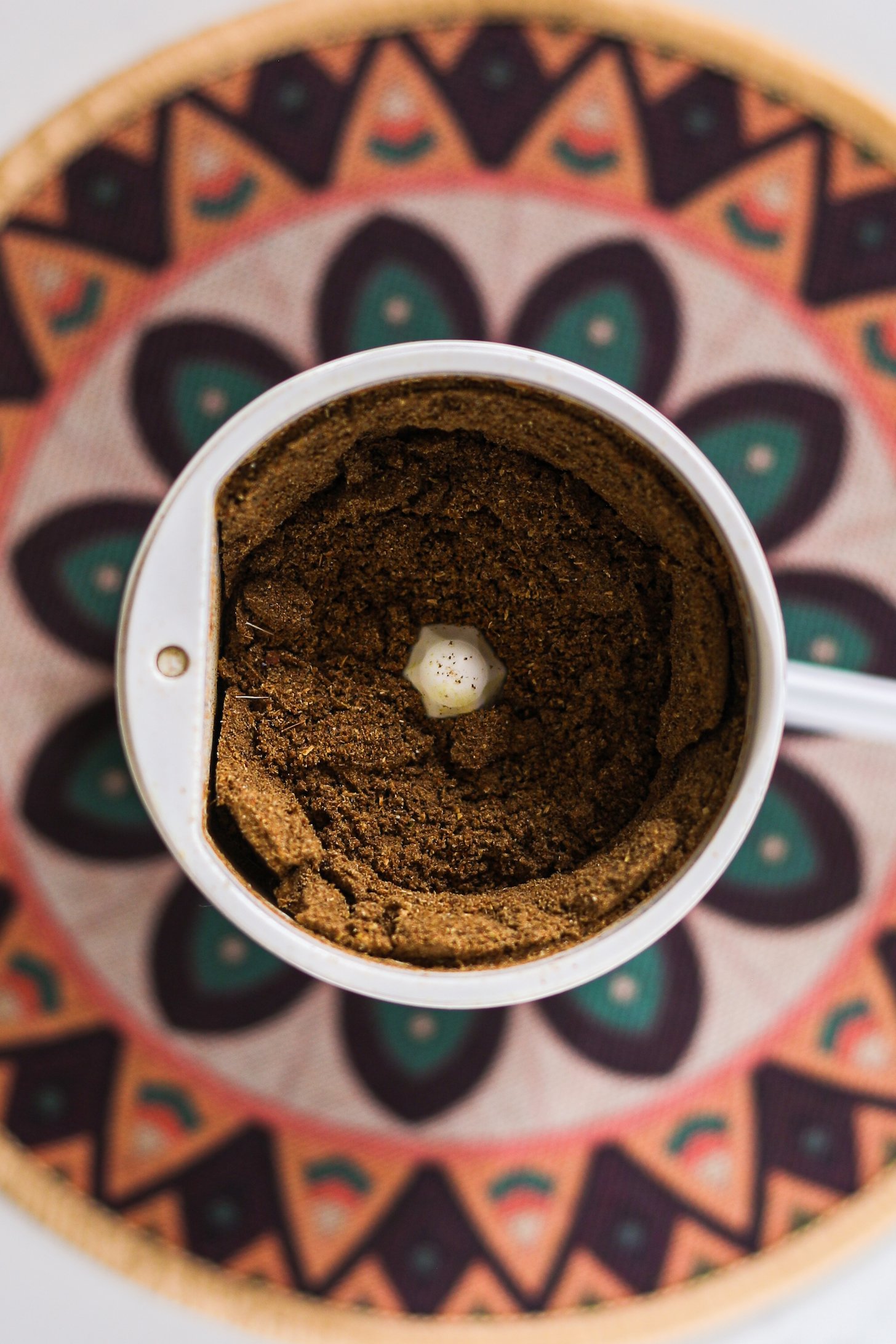
Diabetes diet friendly tip
Adding garam masala to your meal plan is a great way to enhance the flavour and health benefits of your diabetes-friendly meals without relying on excessive salt. Avoiding too much salt in your diet is important as it can lead to hypertension which is a risk factor for diabetes and heart disease.
Commonly ask question (you asked:)
Some specific questions about garam masala powder that I am asked are:
Why do you add garam masala at the end of cooking?
Adding garam masala at the end of cooking helps to preserve some of its volatile oils and flavours that are released when it’s heated. I typically add the blend after most of the cooking is done, as this helps ensure that it remains fragrant and full of flavour.
Is garam masala very spicy?
Most garam masala recipe blends aren’t too spicy. It’s more like a mild heat with subtle sweetness from the cardamom, cinnamon and cloves. The black pepper and cumin give it a bit of warmth, but it’s not overwhelming, in my opinion. I think the beautiful flavours of the spices blend together to create a unique and subtle warmth that adds depth to your dishes. If you find it too spicy for your taste, feel free to reduce the amount used in your recipes.
Looking for more health-promoting recipes? Check out this delicious selection of anti-inflammatory recipes which deliver a nutrient-packed punch.
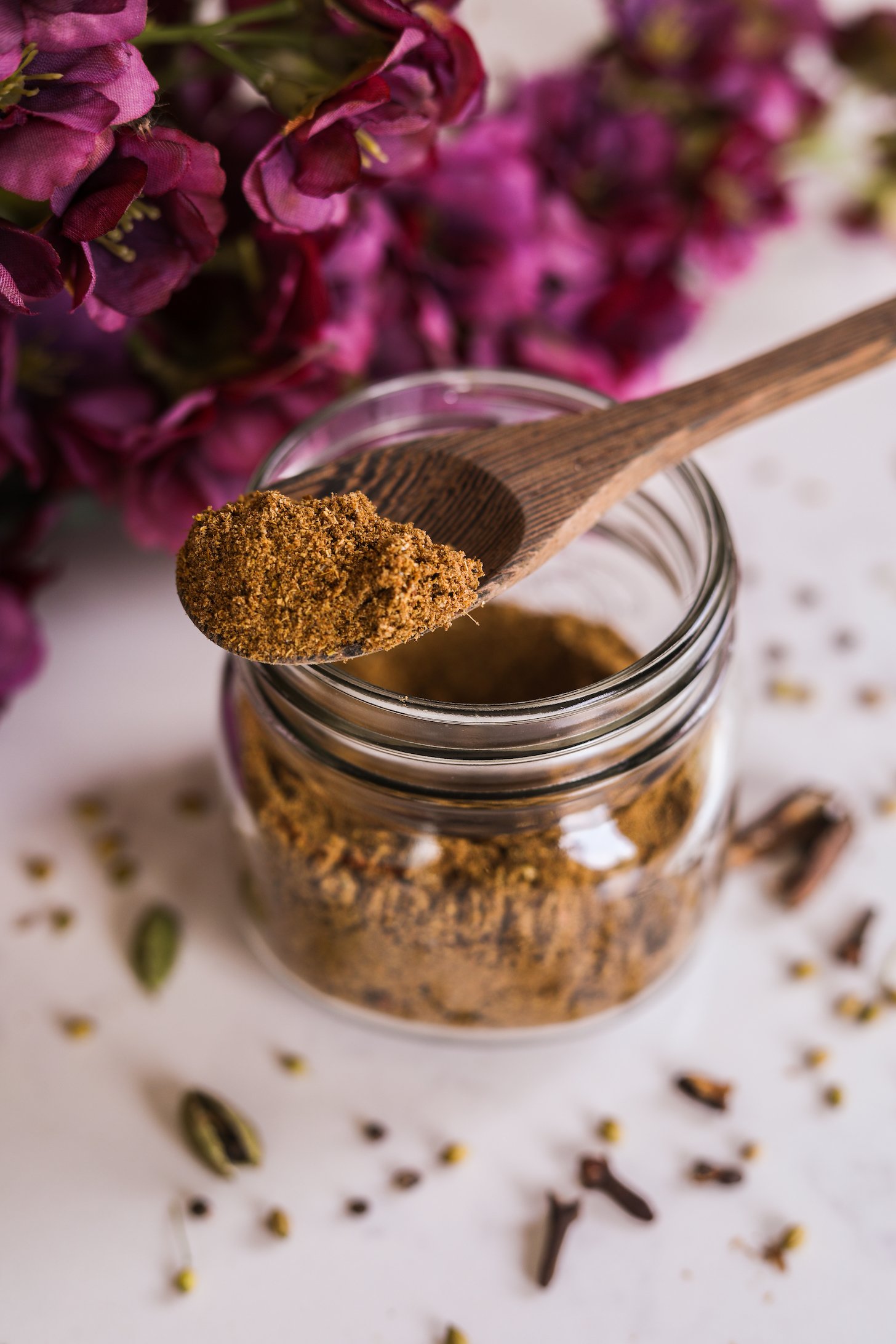
If you try this Indian recipe for garam masala, drop me a comment with your feedback. Rate the recipe and share a photo on Instagram by tagging #DesiliciousRD. It is always lovely seeing you make my recipes!
Ingredients
- 3 tbsp coriander seeds
- 2 tbsp cumin seeds
- 10 green cardamoms, seeds only
- 1 tsp peppercorns
- 12 cloves
- 2 black cardamoms, seeds only
- 2 bay leaves, medium
- 1 cinnamon
Equipment
- 1 spice grinder or a coffee grinder
Instructions
- To prepare the spices, place them in a pan or on a tava and dry roast them over low-medium heat for 2-3 minutes. Stir constantly until they turn a light brown colour and begin to give off a fragrant aroma. Allow the spices to cool completely.
- Grind the whole spices into a fine garam masala powder using a spice or coffee grinder. Store it in an airtight container.
Notes
Diabetes diet friendly tip
- Adding garam masala to your meal plan is a great way to enhance the flavour and health benefits of your diabetes-friendly meals without relying on excessive salt. Avoiding too much salt in your diet is important as it can lead to hypertension which is a risk factor for diabetes and heart disease.
Garam masala uses
- Marinating chicken, seafood and vegetable
- Incorporating it into yogurt-based dip recipes such as raita and chutney
- Experimenting with it in baking recipes such as cakes and breads to add a rare yet delightful twist.
Nutrition Information:
Keep in mind that the nutritional values provided are approximations and suggestions, and might fluctuate depending on ingredient variations, portion sizes, and recipe adjustments. This nutrition facts table cannot account for your individual needs. Your body — including your hunger and satiety cues — change daily. It’s perfectly fine to eat more or less on different days. Instead of letting food guilt take over, consider mindful eating.
* Percent Daily Values are based on a 2000 calorie diet.


